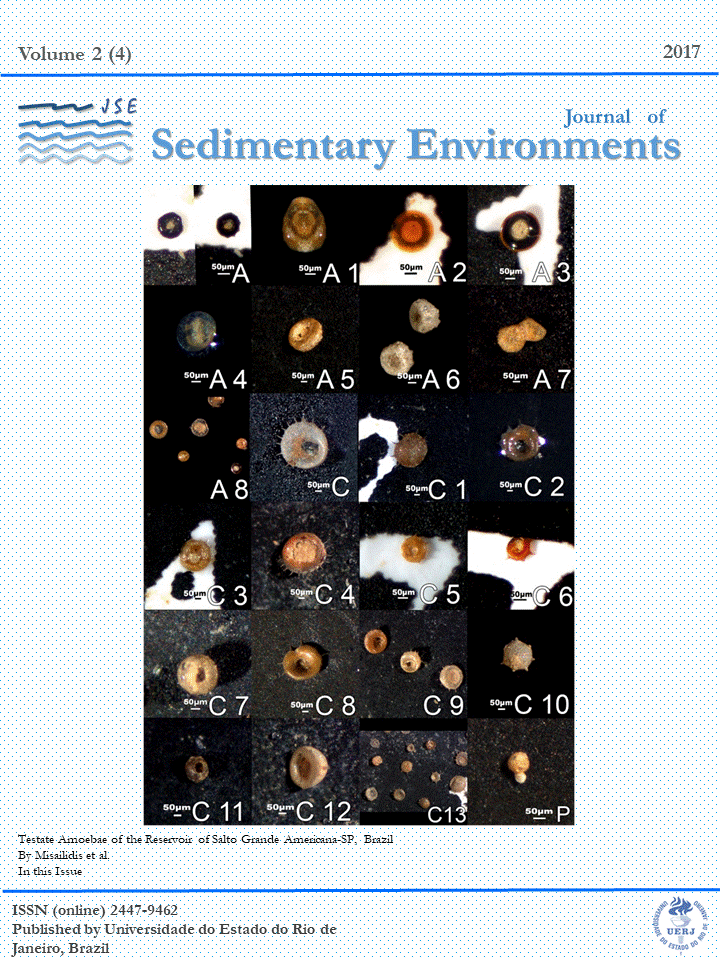AROMATIC STEROIDS BIOMARKERS APPLIED TO HIGH RESOLUTION STRATIGRAPHY: IRATI FORMATION, SOUTHERN OF PARANÁ BASIN, BRAZIL
DOI:
https://doi.org/10.12957/jse.2017.32495Keywords:
Organic Geochemistry. Aromatic Biomarkers. High Resolution Chemostratigraphy. Intracratonic Basin. Irati Formation. Lower Permian. Paraná Basin. Brazil.Abstract
The use of aromatic steroids in geochemical studies is almost absent in Brazilian sedimentary basins. For this reason, it is intended to test the application of these compounds in high-resolution stratigraphy in the relatively well known Lower Permian Irati Formation. The Irati Formation is about 40 meters thick. It is thermally immature, and comprise two lithological distinct members: the lower siliciclastic Taquaral Member and the upper calcareous-siliciclastic Assistência Member. Based on the whole rock data, mostly TOC, total sulfur, Rock-Eval pyrolysis and alkanes biomarkers, was possible to split the Irati Formation into seven chemostratigraphic units, named from A to C in the Taquaral Member and from D to G in the Assistência Member. Each of these units represents: distinct inputs of land derived organic matter type (chemostratigraphic units C and F) and/or; the response of living organisms to salinity changing of the water system (chemostratigraphic unit D) and; anoxia (chemostratigraphic unit E) during sedimentation. The methodology applied in this work can be used in other sedimentary basins but considering the lithology and sedimentary environment particularities.
Downloads
Published
Issue
Section
License

Journal of Sedimentary Environments (JSE) is licensed under a Creative Commons Attribution-Noncommercial-Share Alike 4.0 International License.

